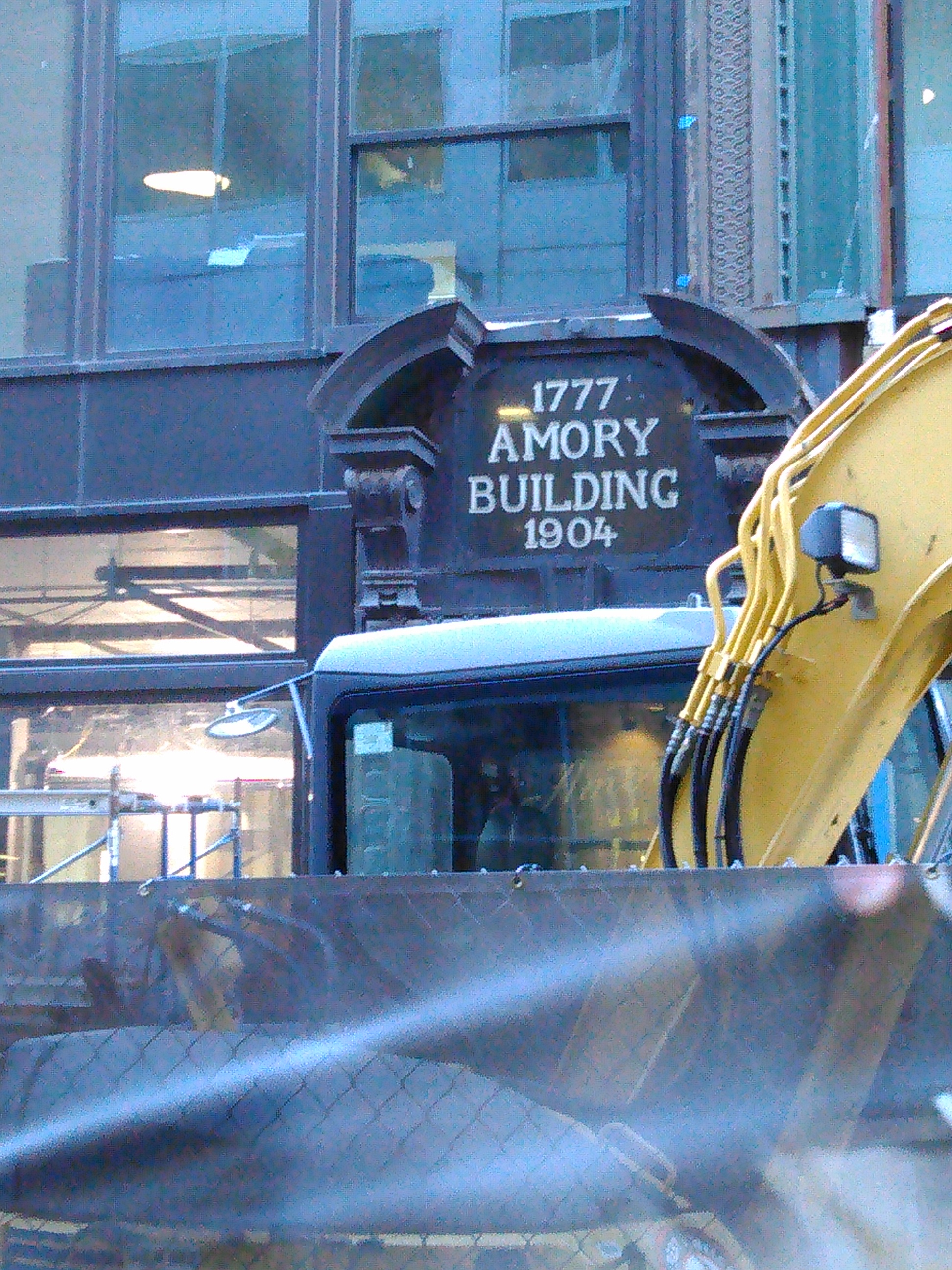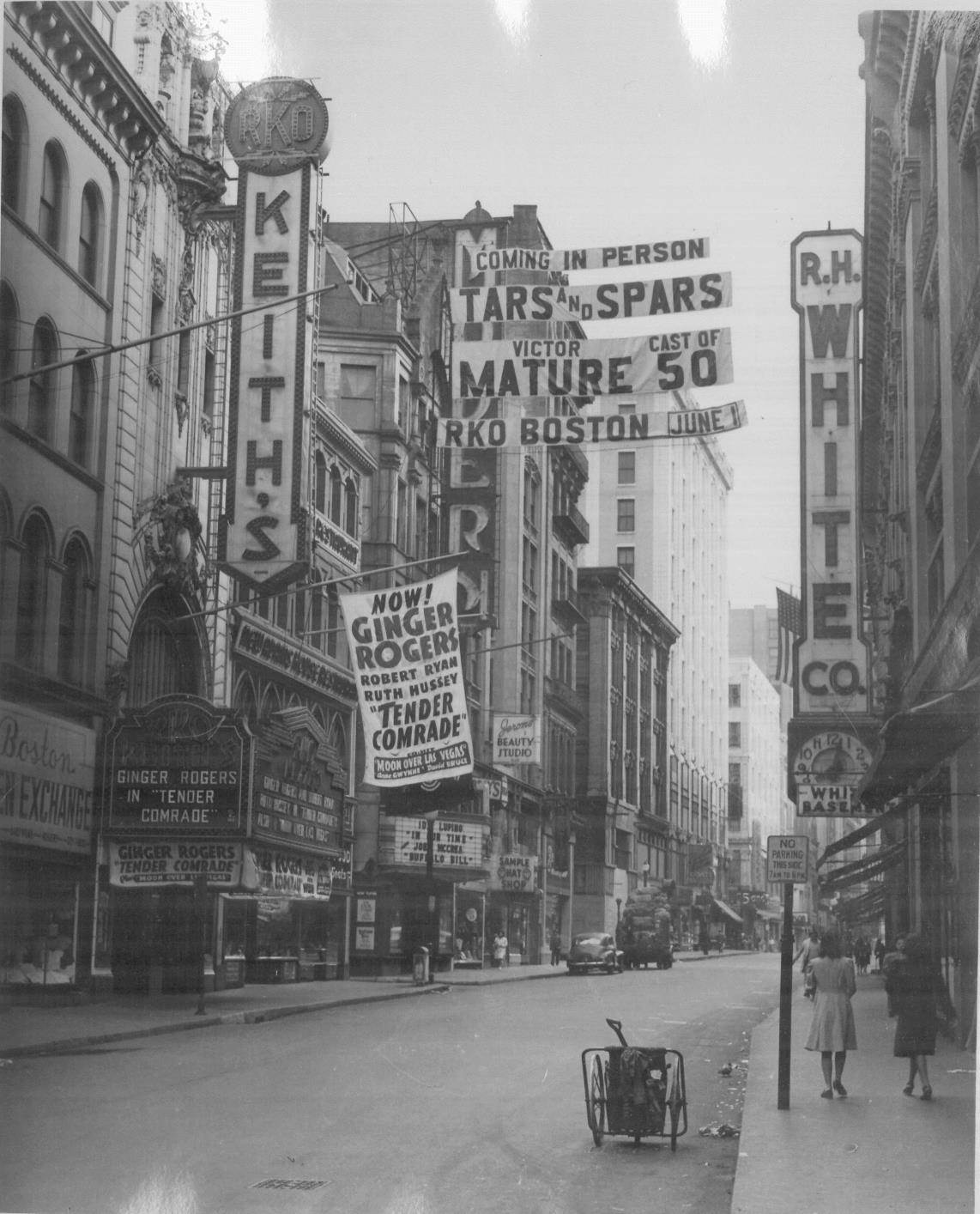By Anna Clutterbuck-Cook, Reader Services
Those of you who live in, or have recently traveled through, Boston know that we are in the midst of a construction boom. Cranes dot the skyline and in many neighborhoods no sooner is one project complete than another one breaks ground. In the midst of this changing landscape the past is never far below the surface. Whether at a macro level (as discussed in the Transforming Boston series this fall) or at the micro level of specific neighborhoods and structures, the physical spaces we live and work in on a daily basis hold imprints of the past, if you care to pay attention. Buildings and streetscapes can provide entry-points into the documentary record of the archive, encouraging us to consider how previous eras have shaped our own.

Amory building
One recent example of this which I stumbled across while running an errand in Downtown Crossing was the Blake and Amory building at the corner of West and Washington streets, currently under renovations after being vacant for some time.

Amory doorway
Prompted by the “Amory Building 1904” above the preserved doorway, I returned to the Society and poked around both in the MHS collections and online to see what I could uncover about the history of this particular building and its surroundings.

Washington St.
Located in Boston’s long-established shopping district, the Blake and Amory building was designed by Arthur H. Bowditch and built in 1904 with additions in 1908. Throughout the twentieth century the building housed commercial tenants selling garments and shoes, furniture, and other dry goods. In 2014 the building was registered as a history property with the National Park Service and the registration application (PDF) provides rich details regarding its construction and use over the course of the twentieth century.
The MHS holds scant information about the Blake and Amory building specifically, but a number of print publications and graphics documenting the lively commercial history of the neighborhood, and within these materials it is possible to catch glimpses of Blake and Amory’s past lives. For example, this photograph from our Views collection — tentatively dated to the 1930s — was taken across the street from the Paramount Theater at 549 Washington St., also designed by Arthur H. Bowditch, and shows the Blake and Amory building on the left.

Washington St., 1930s
These images are just a few examples of visual sources the MHS holds in the collections which help document the changing shape of our local environment. If you are interested in further exploration of our Boston images, please visit the library or contact us for further information.

